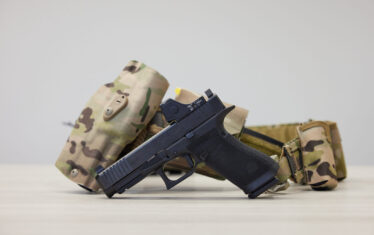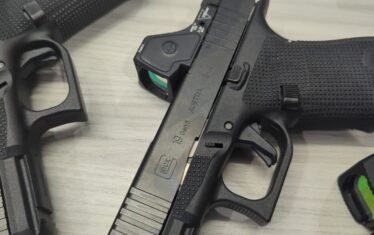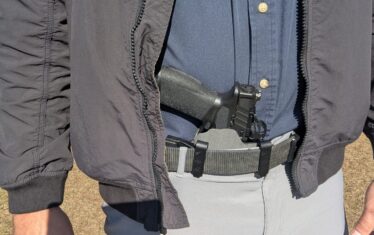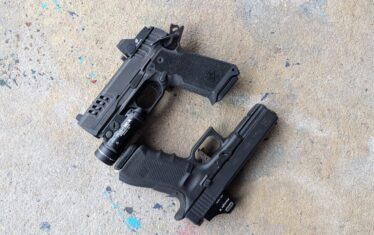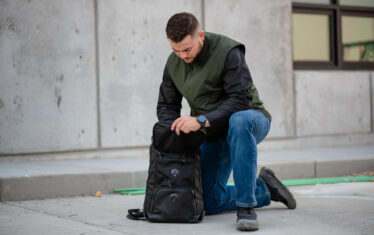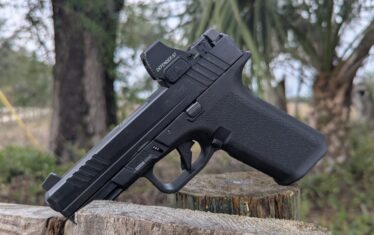The California Handgun Roster is a list of handguns authorized to be bought, sold, lent, given, or manufactured within the State of California. This list, officially labeled Handguns Certified for Sale is organized and maintained by the Office of Attorney General of the State of California.
The Roster falls under California Penal Code sec. 31900, et seq. (see below).
California Handgun Roster
The California gun roster is a particularly onerous piece of legislation that came onto the landscape in an almost Trojan Horse type of fashion. It was seemingly proposed as a safety measure, ostensibly intended to address the proliferation of pistols from “Ring of Fire” manufacturers. These companies included such brands as Lorcin Engineering, Davis Industries, and others, all headquartered around the greater Los Angeles metropolitan area.
The plan did not work as intended, however. All those pistols passed with flying colors. In fact, they were among the first batch of pistols to be approved. In essence this law – frequently described as unconstitutional and with racist origins – infringes on the rights of law-abiding California citizens to own certain firearms.
Firearms that are perfectly legal in the rest of the country.
Thus ironically the new “safety law” allowed the purchase of the so-called Saturday Night Specials that prompted its enactment in the first place, but made it illegal to buy, sell, or import something like an HKP7M8 or a Colt Python.
Though somehow the P7M8 made it to the roster later that year even though it was out of production.
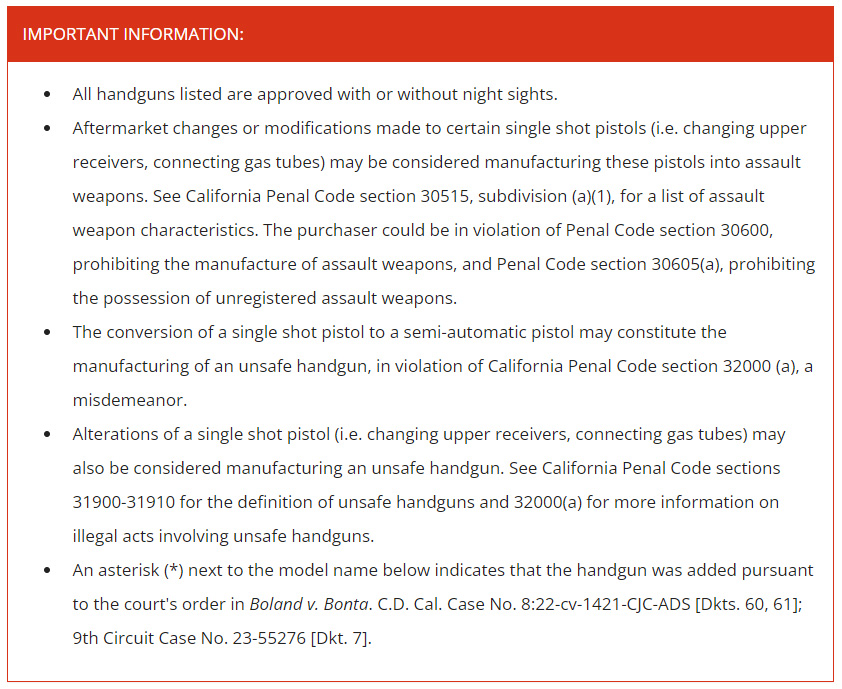
According to California law: Federally licensed firearms dealers may not sell any new handgun unless it is listed in the state’s Department of Justice roster of handguns certified for sale. Listed handguns must include certain mechanical features, such as a safety mechanism and pass a set of laboratory tests. These include dropping the firearm in an attempt to make it fire upon impact.
There are a few exceptions to the roster, such as private party transfers, curio and relic handguns, certain single-action revolvers and single-shot handguns, and pawn/consignment returns. Sales to law enforcement personnel were exempt from the list’s restrictions.
Handguns that were legally owned and registered before the roster’s implementation in 2001 or which were taken off the roster (or discontinued) after their legal purchase and registration can legally be sold in a private transfer as long as it is done through an FFL in accordance with state law.
I personally went through that nonsense when I lived there 20 years ago. The search was on for an S&W Model 52-2, and I eventually found one for sale on consignment from a police supply shop in Chula Vista. This necessitated a 700-mile or so drive to purchase a long out-of-production pistol for bullseye shooting, twice. I drove down to purchase the pistol, drove home, and then repeated the drive 10 days later to physically take possession of my lawfully owned property.
Because private party transfers (conducted through an FFL in accordance with state law) are exempted from the roster and law enforcement, there have been instances of law enforcement officers purchasing off-roster handguns and then re-selling them (typically at a premium) to regular buyers. This practice has led to occasional criminal convictions of officers who were found to be doing so repeatedly.
Then there’s the microstamping
On May 17, 2013, the California Attorney General began enforcing a new law requiring that semi-automatic pistols incorporate microstamping technology. With this technology, microscopic markings are engraved, via laser, on the tip of the firing pin and on the breech face of the firearm.
When the gun is fired, etchings of these markings are transferred to the primer by the firing pin and to the cartridge case head by the breech face, using the pressure created when a round is fired. If successful, this imprints two identifying numbers, unique to that firearm, on each spent cartridge casing.
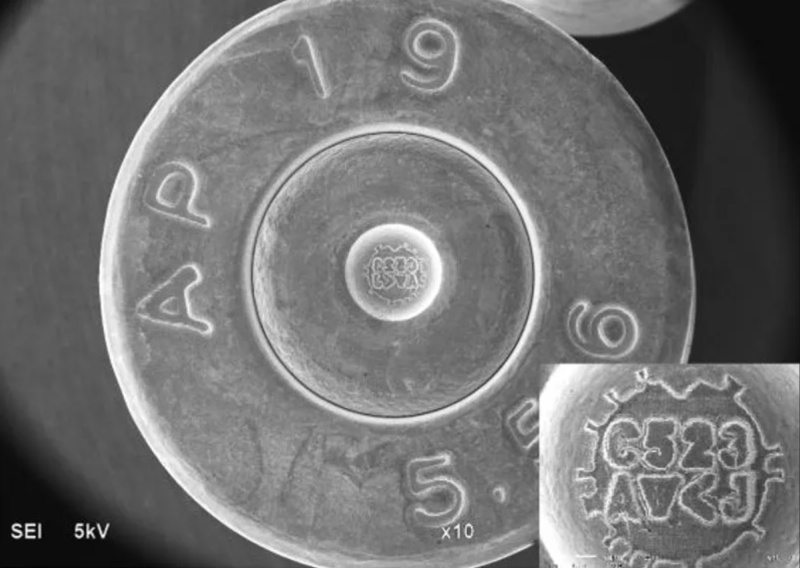
This requirement applies to new guns being added to the roster of handguns certified for sale; semi-automatic handgun models already listed on the roster are not required to incorporate microstamping. This law was passed in 2007, and the wording in the law stated that it would become effective when the technology was available to at least two manufacturers, unencumbered by any patent restrictions.
It’s easy to see why this has been described as a “back door to an unconstitutional firearm ban.” Effective, reliable microstamping technology still doesn’t exist, and it probably won’t for many years.
NSSF v California
In June 2018, in the case of National Shooting Sports Foundation v. California, the California Supreme Court upheld the state’s microstamping law. The court wrote, “Impossibility can occasionally excuse noncompliance with a statute. But impossibility does not authorize a court to go beyond interpreting a statute and simply invalidate it.”
Subsequently ignoring the strictures of science and technology (and many of us would say the US Constitution), California Governor Gavin Newsom signed AB 2847 into law on September 29, 2020. Prior to that law, handguns were required to have at least two such stamps before being admitted to the roster.
After AB 2847 became effective on July 1, 2022, handguns need only one stamp before being admitted. This was counter-balanced, if it can be called that, by mandating the elimination of other models from the Roster on a three-for-one (3:1) ratio. For each new handgun that satisfies the microstamping criterion and other requirements, three older handguns not having the mechanical features must be removed, beginning with the handgun with the earliest admittance date.
Going Forward
There have been a few glimmers of hope from the courts, however.
On March 20, 2023, Judge Cormac J. Carney (Boland vs Bonta) granted a preliminary injunction against requiring mechanical features like an external safety. He placed a stay for 14 days from that day.
The case was appealed to the Ninth Circuit, where it granted its own stay.
On March 31, 2023, Judge Dana Sabraw in Renna v. Bonta granted another preliminary injunction against requiring features as well as the requirement to remove three grandfathered handguns for every new handgun added to the roster. However, he also placed a stay pending appeal.
This case was also appealed to the Ninth Circuit.
Litigation back and forth on these and many other firearm- and Second Amendment-related cases is ongoing. So does the pursuit of further restrictions, even as the previous ones are still contested. For instance, on February 13, 2023, California Senator Catherine Blakespear introduced SB 452, which would require all handguns to have a microstamp beginning January 1, 2028.
Perhaps not surprisingly, Gov. Newsom signed SB 452 into law on September 26, 2023.
It’s one thing to propose laws intended to help people or save lives. The only result of the California Handgun Roster, however, is a punishing restriction on law-abiding gun owners and the forced decline of interest in shooting sports by future generations.






